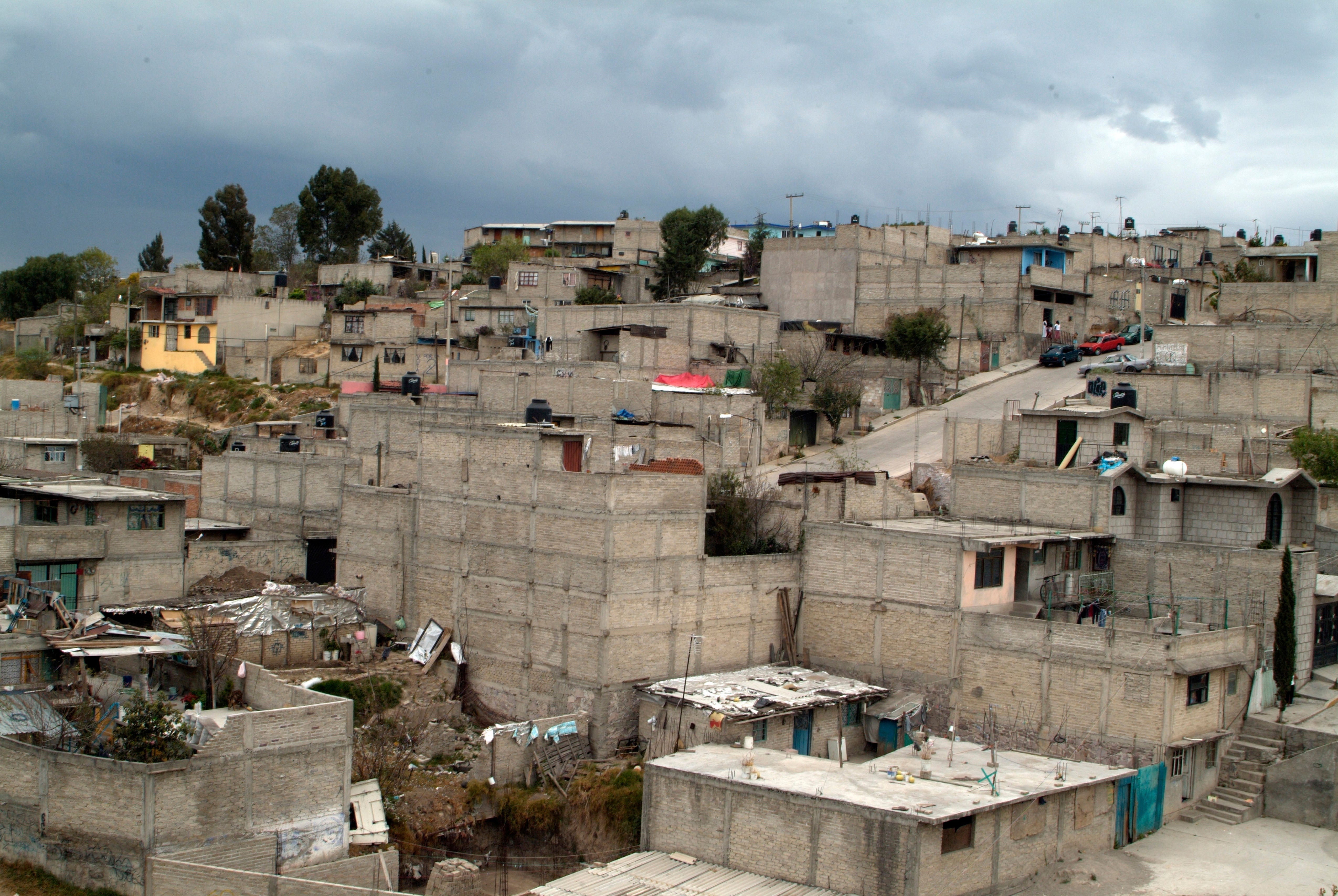Water is being deliberately cut off to poorer parts of Mexico City – and Covid-19 infections are soaring
In one of the most unequal countries in the world, the water supply is being diverted to the rich, leaving poorer neighbourhoods with empty taps during a deadly pandemic. Chris Havler-Barrett reports from the Santo Domingo suburb in Mexico City

The use of water in Mexico City has long been politically charged, and the residents of the Santo Domingo suburb are no strangers to seeing their supplies intentionally cut off.
But in the middle of the coronavirus pandemic it’s proving deadly, with poorer neighbourhoods left without means of basic sanitation as water is intentionally diverted to areas where Mexico City’s richest live. In one of the most unequal countries in the world, it’s leaving the poorest on the brink.
“We don’t have any water because they are sending them to the multifamiliares [large apartment blocks]. They never lack water – but we have been three months without,” resident Maria Dolores Vias tells The Independent, during a protest of some 50 people outside the council.
“When the government comes [to check the pipes], they come for 2 hours and as soon as they go they turn it off. Even when we have water there is no pressure at all,” Maria adds.
“They blame us because we are the epicentre of the infection – but it’s because we have no water.”
The suburb has seen a high incidence of infection since the crisis began to peak in the region at the beginning of May. The accusation is that the prioritisation of running water to luxury developments has allowed infection to spread rapidly.
On 26 July, Santo Domingo alone was responsible for 1.6 per cent of total cases throughout the entirety of Mexico City. However, by early August, this had risen to 2.3 per cent and 40 per cent of coronavirus tests taken in the district reportedly returned a positive result.
In a matter of weeks, the infection rate has rocketed from 110 to over 7,000 people. More than 74,000 people have died from Covid-19 in the country – the fourth highest number worldwide – and more than 680,000 have been infected.
In the area surrounding Santo Domingo, eight neighbouring suburbs have been placed on “Red” under the government’s traffic light lockdown system, closing all but the most essential of businesses as the infection spreads outwards.
Nearby construction work has seen buildings constructed in violation of planning permission, draining natural aquifers and consuming more water than originally planned. While developers cash in on the construction boom, those in Santo Domingo are left with empty taps and forced to rely on pipas – tankers that carry drinking water.
“When it rains, we collect the rainwater, but in other circumstances, when it doesn’t rain, we have to buy pipas. The pipas are expensive. The government says they will pay, that it’s for drinking only, but we need it for everything – and to have water, we need to pay,” explains Vias.
Rodrigo Ramos, owner of a local gallery called La Chona, says some people unable to pay for pipas are resorting to getting water from the Churubusco River – so polluted it has killed off most wildlife.
“It’s a 30-minute walk, but these people don’t have water, they don’t have food and they can’t pay their expenses. How are they meant to survive?” asks Ramos. “There is a complete lack of water. The maintenance work has not been carried out in the areas where it is needed. The money is there, they have just invested it in tourism – and not in the people.”
The gallery has always supported many of the out-of-work artists who normally throng the historic Coyoacan square – but it’s started running handwashing facilities, a Covid-19 advice centre, and food supplies for those affected by the shutdown in business.
Accusations of deliberate mismanagement by the city council – in charge of water distribution – are longstanding. Since 2017 locals have been calling for a new hydraulic water system to be installed, but despite the go-ahead from mayor Manuel Negrete, work never materialised.
They blame us because we are the epicentre of the infection – but it’s because we have no water
Legislators were warned as far back as March by a concerned local councillor, Carlos Castillo, that the lack of running water in the district was likely to exacerbate existing issues involving poor quality of housing and access to basic sanitation.
In a public address attended by The Independent, a spokesperson from the Coyoacan council denied any role in preventing water from reaching the affected areas and said they would guarantee the return of the water supply.
But with no end in sight to the pandemic, residents fear they will be left waiting for a long time yet for this most basic of needs.
“We never have anything,” laments Vias. “We are tired of this.”



Join our commenting forum
Join thought-provoking conversations, follow other Independent readers and see their replies
Comments